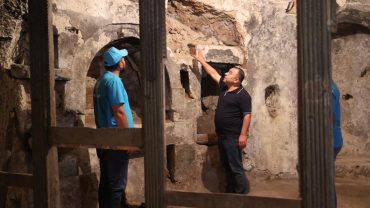
Perge Ancient City, located in the captivating region of Antalya, Turkey, stands as one of the most impressive archaeological sites in Asia Minor. This awe-inspiring ancient city offers a fascinating glimpse into the grandeur of Roman architecture, Hellenistic city planning, and Anatolian history.
In this blog post, we’ll explore the history, architectural significance, and cultural importance of Perge Ancient City, while also uncovering who built it, why it was constructed, and why it remains a must-visit destination for history lovers and travelers worldwide.
A Glimpse into the History of Perge Ancient City
Perge (also spelled Perga) traces its roots back to the Bronze Age, but it flourished significantly under Hellenistic and Roman rule. Founded around 1000 BC, the city was originally established by Greek colonists, possibly from Argos in the Peloponnese. The name “Perge” is believed to have Luwian origins, hinting at the city’s deep Anatolian roots.
The city reached its peak during the Roman Empire, especially between the 1st and 3rd centuries AD. During this time, it became a wealthy and influential city due to its strategic location and fertile lands. It was also one of the early centers of Christianity, and according to historical records, St. Paul the Apostle visited Perge during his missionary journeys.
Why Was Perge Built?
Perge was strategically built near the Kestros (Aksu) River, which provided easy access to the Mediterranean Sea. This prime location allowed it to thrive as a commercial and cultural hub, connecting inland Anatolia with coastal trade routes. The city’s founders aimed to create a prosperous settlement that could benefit from agriculture, trade, and military defense.
Its well-planned layout reflects an intention to build a model Hellenistic city, showcasing urban planning far ahead of its time. The streets, public spaces, and structures demonstrate meticulous attention to symmetry, functionality, and aesthetics.
Architectural Features of Perge: A Roman Marvel
One of the most remarkable aspects of Perge is its preserved Roman architecture, which continues to impress visitors and archaeologists alike. Key features include:

1. The Roman Theatre
With a capacity of over 12,000 spectators, Perge’s theatre is a stunning example of Roman engineering. The stage building (scaenae frons) is richly decorated with reliefs and columns, showcasing the city’s cultural life.
2. The Stadium
Perge’s stadium is one of the best-preserved in the ancient world, with a capacity of approximately 15,000 people. It was used for athletic games and public events, highlighting the importance of entertainment in Roman life.
3. The Hellenistic Gate
This monumental entrance, flanked by towers, served as the ceremonial gate into the city. It’s a rare example of mixed Hellenistic and Roman design elements, complete with inscriptions and statues.
4. The Colonnaded Street
The main street is lined with columns and includes an impressive water channel running through its center. This street leads from the Hellenistic Gate to the Roman Baths and the agora (marketplace).
5. Roman Baths and Agora
The baths of Perge are among the finest Roman bath complexes in Asia Minor. The agora served as a bustling economic center, indicating the city’s prosperity and vibrant community life.
Perge’s Cultural and Historical Importance
Perge was more than just an urban center — it was a beacon of culture, religion, and science. As a city where Greek and Roman civilizations merged, it played a vital role in spreading Hellenistic ideals across Anatolia.
Its association with St. Paul also gives it religious significance, attracting Christian pilgrims and historians. Today, the ruins of Perge continue to offer invaluable insights into ancient urban life, art, and spirituality.
Visiting Perge Today
Located just 17 kilometers east of Antalya, Perge is easily accessible and is often included in day trips alongside Aspendos and Side. Visitors can walk through its ancient streets, marvel at the monumental structures, and imagine life as it was thousands of years ago.
Whether you’re an archaeology enthusiast, a history buff, or a curious traveler, Perge Ancient City offers a truly unforgettable experience.

Perge Ancient City is a hidden gem of the ancient world, offering a unique blend of history, architecture, and cultural depth. Its strategic foundation, Roman splendor, and religious heritage make it one of the most important archaeological sites in Turkey.
If you’re planning a trip to Antalya or looking to uncover the secrets of ancient civilizations, be sure to add Perge to your itinerary. Its timeless beauty and historical resonance will leave a lasting impression.



Comment (0)